So many of my clients want to do all the pushing exercises, all the time. Think, benching and overhead pressing. And while there’s certainly nothing wrong with that (I think we’re all guilty of that here and there), there’s always a danger in chasing your mirror muscles: you might leave your back and rear delts underdeveloped and imbalanced.
That’s why I have pretty much all my strength training clients integrate the reverse flye into their repertoire. The reverse flye, or the rear delt fly, targets the shoulders and upper back muscles, specifically the deltoids, traps, and rhomboids. Hitting these muscles gives you stronger, more balanced arms, solid shoulder mobility, and better functional strength. Here’s how it’s done.
How to Do the Reverse Flye
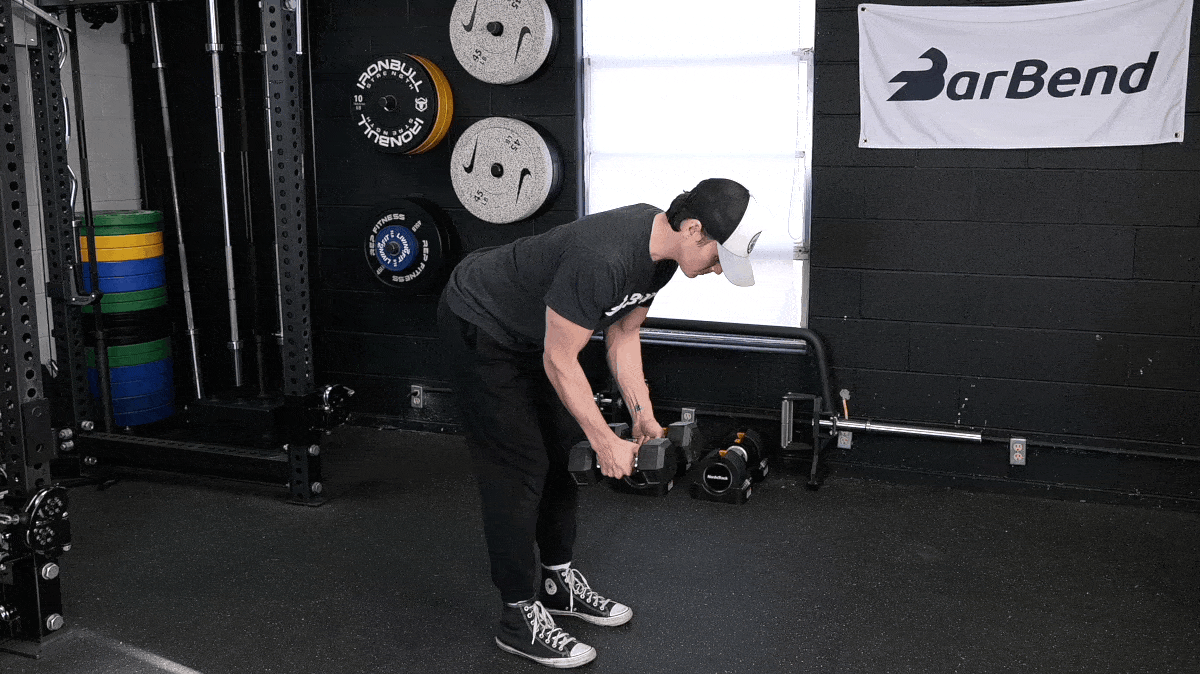
[Read More: The Best Upper Body Exercises and Workouts]
The reverse flye exercise can be done with dumbbells, resistance bands, or a cable machine. The most traditional flye is a bent-over dumbbell reverse fly, and once you know how to do it, it’s easy to perform. Grab a pair of dumbbells and read on to learn how to do it the right way.
- Step 1 — Begin by standing with your feet shoulder-width apart and a dumbbell in each hand. Bend your knees slightly and hinge forward at your hips, keep your back straight, core braced and chest lifted. This should feel similar to the hinge in a deadlift or a good morning. Maintain this tight position through all the repetitions.
- Step 2 — Let your elbows lead as you raise your arms from the starting position (in front of your knees, palms facing each other, with a slight bend in your elbows) until they are parallel to the floor.
- Step 3 — Once your arms are parallel to the floor, focus on squeezing your shoulder blades together.
- Step 4 — Slowly lower the dumbbells back to the starting position, moving with control as you resist gravity.
Sets and Reps
Like their cousin the chest flys, the reverse flye is an isolation exercise, meaning it targets a specific group of muscles, as opposed to a compound exercise like a bench press that uses more than one muscle group at a time.
Because of this, you can either do them at the beginning of your workout routine as a primer to “wake up” your shoulders before moving into a compound lift, or you can program them toward the end of your workout to facilitate muscle growth or endurance.
Your goals will determine the right set and rep range to select.
- For Building Muscle: Try doing 3-4 sets of 5-8 reps. Choose a weight that allows you to complete the set while maintaining control, but still offers a challenge.
- For Endurance: Try doing 2-3 sets of 10-15 reps. Similarly to muscle building, you’ll want to select a weight that challenges you but that you can still control through the full range of motion for the entire set.
While theoretically, you could test your max strength on the reverse flye, you wouldn’t get a lot of benefits out of it. Maxing out on an exercise that only recruits a couple of muscles could overload those muscles while neglecting others, creating an imbalance. Essentially, the risk of potential injury would outweigh the strength you would build.
Reverse Flye Modifications
- Make it Easier: If holding the bent-over hinge position is difficult and maintaining it is taking away from the exercise itself, try propping your chest on an incline bench and performing the reverse flye in that position. The weight bench will add support and stabilize you. You can also use a fly machine for added stability as long as it has a reverse direction available.
- Make it Harder: With each rep, challenge yourself to bring the weights down as slowly as possible. This will dramatically increase your time under tension, which is great for muscle growth.
Reverse Flye Variations
The reverse flye can be done with different equipment and alternative positions, allowing you to switch up your workout and give your muscles a novel stimulus. Adding these variations to your workout will ensure that your upper back and shoulders are strong and mobile.

- Standing Cable Crossover Flye: This movement is similar to the dumbbell reverse fly, only in this case, you will remain standing upright. To perform this exercise, you will need two cable machines facing each other.
- Set the cables at shoulder height and stand in between them with a cable at each shoulder.
- Grab a cable in each hand from the opposite side of your body so your arms are crossed in front of you. I find it easier to hold the cable from the ball at the end instead of an attachment, but you can also use a D-handle.
- Pull your shoulders down and back, tighten your core, and engage your glutes. Place your arms straight out in front of you. With your elbows slightly bent, pull your arms out to your sides, leading with your elbows.
- Once your arms are fully extended out to your sides, squeeze your shoulder blades together and then slowly return to the starting position.
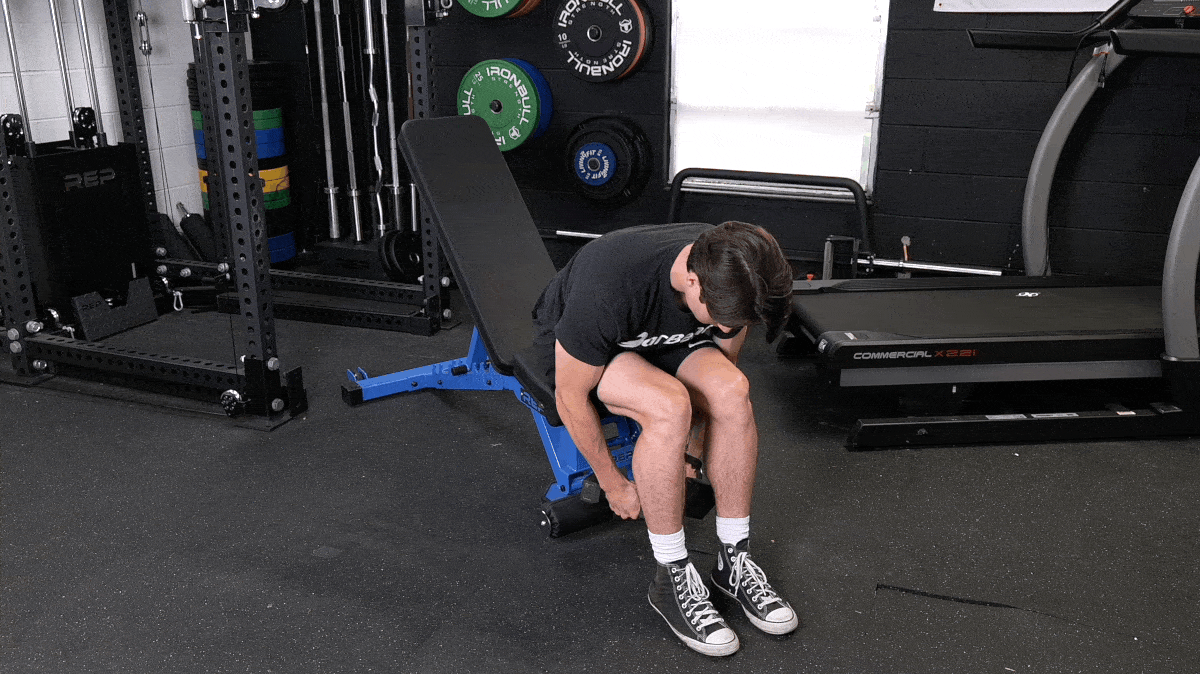
- Seated Bent-Over Reverse Flye: You can do this with either a set of dumbbells or a cable machine set at the lowest position. This is more challenging than the bent-over flye in that it eliminates your ability to use momentum.
- Sit on a bench and lean forward with your arms at your side. Your chest should be hovering over your knees, not hunched over.
- Keep your shoulders packed as you bring your arms from down by your legs out to the side and parallel to the floor.
- Squeeze your shoulder blades, then slowly return back to the starting position.

- Cable Single-Arm Bent-Over Flye: This single-arm exercise is another cable variation that I like to add to my clients’ routines (and my own). Again, you can use the cable without an attachment or a D-handle for this exercise.
- Stand to the side of a cable machine set to a low position.
- Grab the cable with one hand and take a small step away from the anchor point to create tension in the cable.
- Stand with your feet shoulder-width apart, knees slightly bent, and hinge forward at your hips to bring your torso close to parallel with the floor. Keep your back straight, chest up, and core engaged throughout the exercise.
- Bring the working arm out to your side, away from the anchor point, leading with your elbows.
- Stop when your arm is parallel to the floor and squeeze your shoulder blades together.
- Slowly return your arm back down to the starting position.
- Complete on both sides for the appropriate number of reps.
Reverse Flye Alternatives
If you’re searching for other shoulder and upper back exercises to add to your back workout, here are a few more suggestions to try.
Lateral Raise
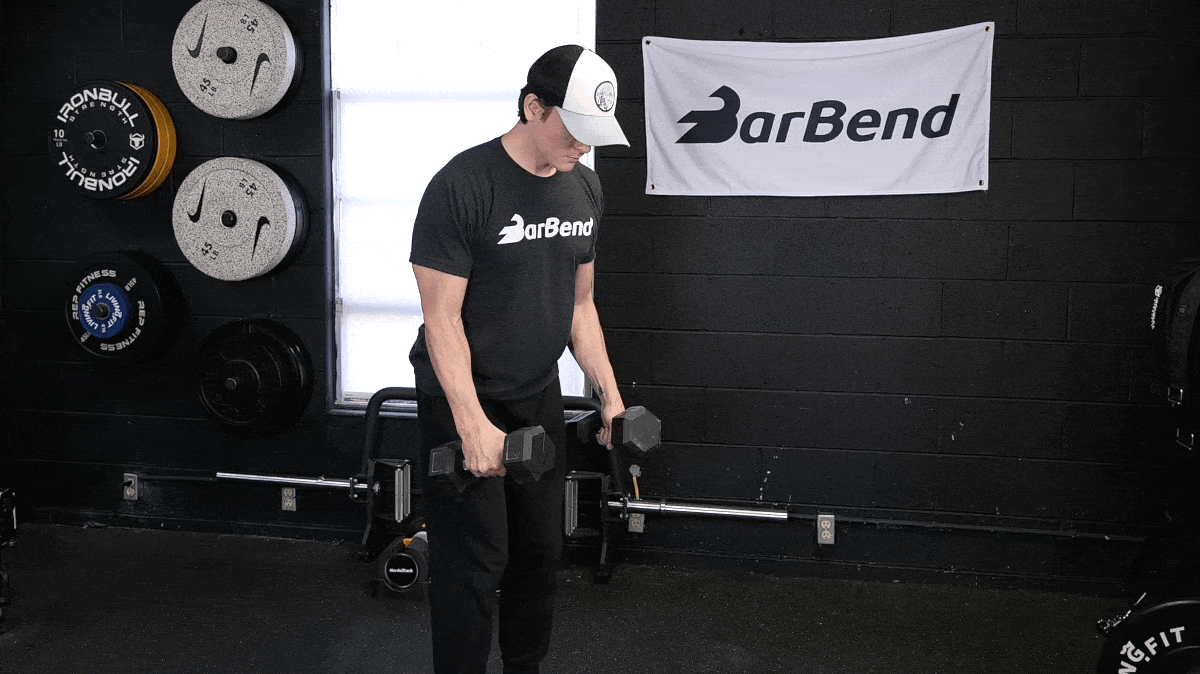
[Read More: The Best Back Exercises And Full Workouts To Build Muscle And Strength ]
- Stand with your feet shoulder-width apart, holding a dumbbell in each hand by your sides. Maintain a slight bend in your elbows and keep your back straight, chest up, and shoulders away from your ears.
- Lift your arms out to the side until your arms are parallel to the floor. Keep your wrists straight, spine neutral, and core engaged.
- Squeeze your shoulder blades together at the top of the movement.
- Slowly bring your arms back down to the starting position.
Upright Row
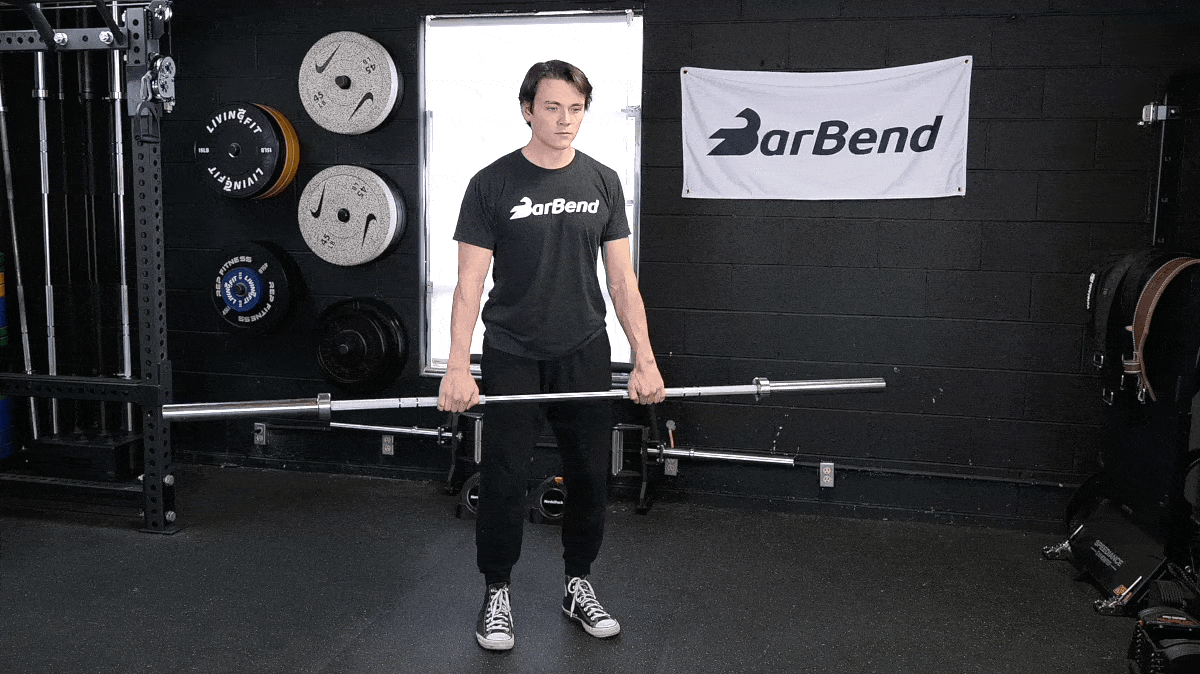
[Read More: The Best Shoulder Exercises, + Workouts From a CPT]
- Stand with your feet shoulder-width apart, holding a barbell or a pair of dumbbells in front of you with an overhand grip and hands slightly narrower than shoulder-width apart. Keep your back straight, chest up, shoulders packed and core engaged through the entire movement.
- Lift the barbell or dumbbells straight up, stopping at the top of your shoulders. Squeeze your shoulder blades together at the top and ensure that your shoulders stay away from your ears.
- Slowly resist gravity as you return to the starting position.
Suspended Y Raise

[Read More: The Most Effective Workout Splits, Created by Our Experts]
- Adjust the suspension straps so that they hang close to the floor. Stand facing the anchor point with your feet shoulder-width apart. Hold onto the handles with an overhand grip and arms fully extended at your side.
- Lean back slightly and extend your arms above your head to form a “Y” shape with your body keeping your core engaged and your spine neutral throughout the entire movement. Ensure that your shoulders remain down and away from your ears.
- Slowly bring your arms back down to the starting position, making sure that you maintain tension on the straps.
Muscles Worked by the Reverse Flye
Knowing which muscles you need to engage during each exercise allows for better muscle engagement and more effective targeting. By understanding which muscles are involved in the reverse flye, you can ensure that you are performing the exercise correctly and safely, leading to better results and reduced risk of injury.
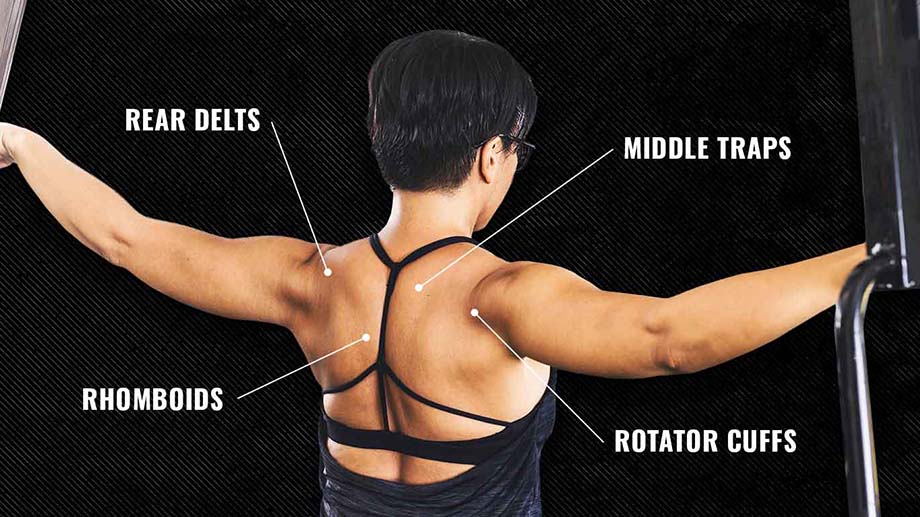
[Read More: The Best Mobility Exercises, PT-Approved]
The primary muscles worked in the reverse flye are the upper back and shoulders, specifically, the posterior deltoids and rhomboids. Additionally, the middle trapezius and rotator cuffs also assist in this exercise.
- Rear Deltoids: Located on the back of the shoulder, the rear, or posterior, delts help pull your arms backward and away from your body. During a reverse flye, the posterior deltoids contract to raise your arms out to the sides. They are important in building strong and mobile shoulders.
- Rhomboids: The rhomboids are located between the shoulder blades and are responsible for retracting them toward the spine. In a reverse flye, the rhomboids contract to squeeze your shoulder blades together as your arms move outward. They are essential for having good posture and building strong and resilient shoulders.
- Middle Trapezius: The middle trapezius also retracts the shoulder blades, helps stabilize the shoulder, and maintains proper posture during the movement. When properly engaged, they also can assist in mitigating neck and shoulder pain.
- Rotator Cuff: The rotator cuff is made up of a group of muscles that work together to stabilize and rotate the shoulder. In a reverse fly, the rotator cuff stabilizes the shoulder. Strengthening the rotator cuff can help with controlling the weights that you lift.
Benefits of the Reverse Flye
Because the reverse flye is an isolation exercise, it is a great way to target the delts and upper back. A study found that single-joint exercises like the reverse flye are as effective as compound movements in building muscle and strength. (1)
Incorporating the reverse flye into your routine provides all the benefits of doing a compound lift like enhanced shoulder stability, improved posture, greater strength, and increased muscle definition in the upper back and shoulders. But this move also does so without overloading and exhausting your body.
Enhancing Shoulder Mobility
Working on shoulder mobility is essential for getting an overall stronger, more stable upper body. Stable shoulders equal better lifts on upper body compound movements like the bench press, overhead press, and deadlift.
Mobile shoulders are (perhaps ironically) related to gaining more stable shoulders because they can help prevent injury and alleviate shoulder pain. Plus, moving your shoulders through the full range of motion freely and without pain adds to an overall better quality of life.
Builds Well-Rounded Shoulders
The reverse flye hits the muscle groups that build well-defined, three-dimensional shoulders. Adding reverse flyes into your workout routine and performing them with proper form will contribute to a more balanced and sculpted upper body and shoulders.
Improves Posture
Perfecting the reverse flye strengthens the muscles that retract the shoulder blades, which can help mitigate rounded shoulders and a forward neck. This can also relieve neck tension and pain caused by overusing the muscles in your neck (texting and typing all day, anyone?)
Common Reverse Flye Mistakes
Using good form is essential for getting all the benefits of the reverse flye. It’s important to be mindful of the common mistakes that can take away from the effectiveness of the exercise so that you can know what not to do.
Elevating Shoulders
Allowing your shoulders to rise toward your ears can cause your traps to work overtime causing neck pain. Instead, retract your shoulders by pulling your shoulders down and back towards your spine and squeeze your armpits to engage your lats. This will ensure that the correct muscles are engaged, and you’re maximizing that rear delt hypertrophy.
Arching the Lower Back
Arching, or hyperextending, your lower back can lead to a strain in your lower back. To keep this from happening, keep your core braced and your spine neutral during the exercise.
[Read More: Exercises to Strengthen the Lower Back & Prevent Pain, Plus 3 Workouts]
If you can’t perform this exercise without feeling a strain in your lower back, consider switching to the prone incline reverse flye or a chest flye machine (set up for the reverse flye, of course) so that your lower back is taken out of the equation.
Using Momentum
Swinging your arms and using momentum takes away from the effectiveness of the exercise. Instead, try slowing down and focusing on controlling the movement through the entire range of motion. This way, you can reduce your risk of injury and ensure that the proper muscles are being used.
Frequently Asked Questions
Understanding the benefits and proper form of reverse flyes is essential for anyone seeking to improve their upper body strength and shoulder stability. Keep reading to answer any further questions you may have.
What muscles does the reverse flye work?
The reverse flye primarily targets the muscles in the shoulders and upper back. Specifically, it works the rear delts. It also works the rhomboids, middle traps, and rotator cuffs.
Are reverse flyes effective?
Reverse flyes can be very effective when done properly. No matter what your gym goals are, adding the reverse flye into your workout can contribute to fulfilling them. They build strong, mobile, and well-rounded shoulders. They can also contribute to better posture.
How do you do a reverse flye properly?
Stand with your feet hip-width apart and knees slightly bent. Hold your arms down in front of you with your elbows slightly bent and a dumbbell in each hand. Maintain a neutral spine and a tight core as you raise your arms out to the side until they are parallel to the floor. Squeeze your shoulder blades together and slowly lower the dumbbells back to the starting position.
References
- Asian J Sports Med. 2015 Jun; 6(2): e24057. Published online 2015 Jun 22.